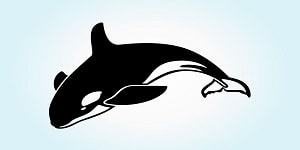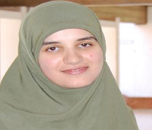
Aqua 2018

Theme: New Advancements in Aquaculture & Marine Biology
Aqua Conference is delighted to welcome the participants from all over the world to attend the prestigious International Conference on Aquaculture & Marine Biology scheduled during June 25-27, 2018 in Rome, Italy. The conference provides the global coliseum to international scholars and researchers to voice their research findings to the world. With representatives from all the major aquaculture countries in attendance the atmosphere is exciting with open and friendly interaction between attendees. This is a conference, providing an opportunity for the aquaculture & marine biology industry to learn about current and upcoming issues, explore new developments in culture technology, and interact with others with similar interests.
Meetings International (Meetings Int.) is a global leader in producing high quality conferences, meetings, workshops and symposia in all major fields of science, technology and medicine. Since its inception, Meetings Int. has been associated with national and international associations, corporations and high level individuals, dedicated to host world class conferences and events. Meetings Int. supports broad scope research and peer review at a broad range of specialists around the world.
This conference brings together a unique and international mix of experts like academicians, scientists, and business professionals, general public, current and prospective fish farmers to share information and ideas about the development of aquaculture & marine biology. Attendees will learn about several topics relevant to aquaculture & marine biology, and find out about the latest aquaculture equipment and products by browsing the ongoing Exhibition. Anyone with an interest in aquaculture, marine science, including prospective growers, researchers, teachers, students or agency persons with jobs related to aquaculture & marine biology can attend the conference. The conference is also suited to persons who sell goods or services to the aquaculture & marine biology industry.
Aquaculture Conference | Marine Biology Conference | Aquaculture Meeting | Aquaculture & Marine Biology Conference | Fisheries Conference | Marine Science Conference | Aquatic Science Conference | Fisheries Science Meeting
Session 1: Aquatic Science
Aquatic Science is the multidisciplinary study of aquatic systems, encompassing both freshwater and marine systems. Scientific investigations within this field often examine the human impact on and interaction with aquatic systems and range in scale from the molecular level of contaminants to the stresses on entire ecosystems. The aim of organizing the aquaculture conference is to supply exposure to technologies and international tie-ups and to supply data regarding recent trends in aquaculture.
Aquaculture Conference | Marine Biology Conference | Aquaculture Meeting | Aquaculture & Marine Biology Conference | Fisheries Conference | Marine Science Conference | Aquatic Science Conference | Fisheries Science Meeting
Session 2: Aquaponics
According to Aquaculture meeting discussions, aquaponics is the combination of aquaculture and hydroponics (the soil-less growing of plants) that grows fish and plants together in one integrated system. The fish waste provides an organic food source for the plants, and the plants naturally filter the water for the fish. Aquaculture meetings bring the researchers together to present and discuss their work.
Aquaculture Conference | Marine Biology Conference | Aquaculture Meeting | Aquaculture & Marine Biology Conference | Fisheries Conference | Marine Science Conference | Aquatic Science Conference | Fisheries Science Meeting
Session 3: Aquatic Health and Hygiene
Aquaculture production helps to reduce pressure on wild fisheries caused by overfishing. Diseases have emerged as a significant problem due to the high stocking densities used in intensive aquaculture. These diseases may devastate the farmed aquatic animals and spread to wild populations. In aquaculture meetings, researchers exchange the information and their research experiences.
Aquaculture Conference | Marine Biology Conference | Aquaculture Meeting | Aquaculture & Marine Biology Conference | Fisheries Conference | Marine Science Conference | Aquatic Science Conference | Fisheries Science Meeting
Session 4: Aquaculture Nutrition & Supplies
According to discussions of experts in aquatic science events, at a global level, aquaculture is one of the fastest growing food production sectors (9.6 per cent/yr in the last decade), a fact that will ultimately change the way that fish is perceived as food. A key element of this observation is the change in the supply opportunities for fish and fish products from a wild source to a cultured one. Aquaculture conference gives information about the rapid growth in aquaculture production which made the sector important to the economy of many developing countries, and it has become either an important source of supply, or the main supplier, in the case of some products.
Aquaculture Conference | Marine Biology Conference | Aquaculture Meeting | Aquaculture & Marine Biology Conference | Fisheries Conference | Marine Science Conference | Aquatic Science Conference | Fisheries Science Meeting
Session 5: Marine Biology
According to Marine biology meetings, marine biotechnology is a growing field comprising marine bio-medicine including pharmaceuticals discovery, materials technology, bio remediation, marine biomedical model organism, genomics, bioinformatics and molecular genetics. The prime motivation for this discipline is clearly derived from the enormous biodiversity and genetic life in sea.
Aquaculture Conference | Marine Biology Conference | Aquaculture Meeting | Aquaculture & Marine Biology Conference | Fisheries Conference | Marine Science Conference | Aquatic Science Conference | Fisheries Science Meeting
Session 6: Marine Ecology & Ecosystem
Ecology is the scientific study of how organisms interact with each other and with their environment. This includes relationships between individuals of the same species, between different species, and between organisms and their physical and chemical environments. Aquatic ecology includes the study of these relationships in all aquatic environments, including oceans, estuaries, lakes, ponds, wetlands, rivers, and streams. The boundaries of an aquatic ecosystem are somewhat arbitrary, but generally enclose a system in which inflows and outflows can be estimated. Ecosystem ecologists study how nutrients, energy, and water flow through an ecosystem.
Aquaculture Conference | Marine Biology Conference | Aquaculture Meeting | Aquaculture & Marine Biology Conference | Fisheries Conference | Marine Science Conference | Aquatic Science Conference | Fisheries Science Meeting
Session 7: Marine Drugs
According to marine biology conference reports, marine floras are potential source of anticancer compounds, but they are least explored. Of the anticancer compounds extracted so far, the marine algae contribute 65.63%, the mangroves 28.12%, and the bacteria 6.25%. Owing to a diverse chemical ecology, the marine organisms especially marine flora have a great promise for providing potent, cheaper, and safer anticancer drugs, which deserve an extensive investigation. According to the American Cancer Society, the global burden is expected to grow as 27 million new cancer cases and 17.5 million cancer deaths simply due to the growth and aging of the population by 2050.
Aquaculture Conference | Marine Biology Conference | Aquaculture Meeting | Aquaculture & Marine Biology Conference | Fisheries Conference | Marine Science Conference | Aquatic Science Conference | Fisheries Science Meeting
Session 8: Marine Pharmacology
Marine organisms have provided a large proportion of the bioactive natural products. but none of these compounds have reached the pharmaceutical marketplace. This marine science meetings describes the current progress in the development of a selection of new antiinflammatory and anticancer agents, discusses some difficulties encountered during the development process and suggests how these difficulties may be overcome in the near future through applications of recent advances in biotechnology.
Aquaculture Conference | Marine Biology Conference | Aquaculture Meeting | Aquaculture & Marine Biology Conference | Fisheries Conference | Marine Science Conference | Aquatic Science Conference | Fisheries Science Meeting
Session 9: Fisheries Biology & Management
The primary goal of Fisheries conservation is to restore fish populations that have been eliminated because of pollution or habitat destruction. Fisheries management draws on fisheries science in order to find ways to protect fishery resources so sustainable exploitation is possible. Modern fisheries management is often referred to as a governmental system of appropriate management rules based on defined objectives and a mix of management means to implement the rules, which are put in place by a system of monitoring control and surveillance.
Aquaculture Conference | Marine Biology Conference | Aquaculture Meeting | Aquaculture & Marine Biology Conference | Fisheries Conference | Marine Science Conference | Aquatic Science Conference | Fisheries Science Meeting
Session 10: Marine and Coastal Fisheries
Marine aquaculture refers to the culturing of species that live in the ocean. Marine aquaculture can take place in the ocean (that is, in cages, on the seafloor, or suspended in the water column) or in on-land, manmade systems such as ponds or tanks. Recirculating aquaculture systems that reduce, reuse, and recycle water and waste can support some marine species.
Aquaculture Conference | Marine Biology Conference | Aquaculture Meeting | Aquaculture & Marine Biology Conference | Fisheries Conference | Marine Science Conference | Aquatic Science Conference | Fisheries Science Meeting
Session 11: Coral Reefs
Coral reefs are diverse underwater ecosystems held together by calcium carbonate structures secreted by corals. Coral reefs are built by colonies of tiny animals found in marine water that contain few nutrients. Most coral reefs are built from stony corals, which in turn consist of polyps that cluster in groups. The polyps belong to a group of animals known as Cnidaria, which also includes sea anemones and jellyfish. Unlike sea anemones, corals secrete hard carbonate exoskeletons which support and protect the coral polyps. Most reefs grow best in warm, shallow, clear, sunny and agitated water.
Aquaculture Conference | Marine Biology Conference | Aquaculture Meeting | Aquaculture & Marine Biology Conference | Fisheries Conference | Marine Science Conference | Aquatic Science Conference | Fisheries Science Meeting
Session 12: Freshwater Biology
According to marine science conference, freshwater biology is the scientific biological study of freshwater ecosystems and is a branch of limnology. This field seeks to understand the relationships between living organisms in their physical environment. The aim of organizing the marine science conference is to supply exposure to technologies and international tie-ups and to supply data regarding recent trends in aquaculture and marine biology.
Aquaculture Conference | Marine Biology Conference | Aquaculture Meeting | Aquaculture & Marine Biology Conference | Fisheries Conference | Marine Science Conference | Aquatic Science Conference | Fisheries Science Meeting
Introduction:
Aquaculture is the fastest-growing food production system in the world due to the lack of naturally available varieties of fisheries harvested in natural environments. The increasing awareness of the health benefits and nutritional value associated with seafood has accelerated its consumption. Aquatic products, especially farmed salmon and shrimps, are highly nutritious sources of food, consisting of important proteins, vitamins A, B, D, and Niacin, minerals like iodine, iron, phosphorus, and zinc. These foods also have a significant source of Omega-3 fatty acids such as docosahexaenoic acid (DHA) and eicosapentaenoic acid (EPA).
Aquaculture in Europe:
In Europe, aquaculture accounts for about 20% of fish production and directly employs some 85 000 people. The sector is mainly composed of SMEs or micro-enterprises in coastal and rural areas. Europe aquaculture is renowned for its high quality, sustainability and consumer protection standards. Europe overall output has been more or less constant in volume since 2000 whereas global production, at the same time, has been growing by nearly 7% per year. The European Commission has launched a number of campaigns to promote sustainable aquaculture in the EU.
Aquaculture in America:
Marine aquaculture in the United States contributes to seafood supply, supports commercial fisheries, restores habitat and at-risk species, and maintains economic activity in coastal communities and at working waterfronts in every coastal state. Aquaculture also supports commercial and recreational fisheries. About 40% of the salmon caught in Alaska and 80-90% in the Pacific Northwest start their lives in a hatchery - contributing over 270 million dollars to the commercial fishery.
Aquaculture in Middle East:
With seven seas surrounding the region, including the Mediterranean, the Persian Gulf, the Gulf of Aden, the Red Sea, the Black Sea, the Caspian Sea and the Arabian Sea, the Middle East is not short of sources for fresh seafood. However, total production in the region amounts to only 2.17% of the total worldwide production. Capture fisheries are characterized by a large number of small-scale fisheries, with it estimated that the small-scale sector provides about 80 to 90% of the total landings.
Aquaculture in Asia:
According to official statistics, production in a number of Asia-Pacific fisheries peaked in the last two decades and is now stable or declining, depending on the area being fished. Highly intensive fishing, especially in trawl fisheries, targeting shrimp and other demersal species has also led to a change in catch composition. The share in landings of fast growing and short-lived species and the catch of small-sized juveniles of commercially important fish species is steadily increasing (so-called “fishing down the food chain”).
Aquaculture in Italy:
Aquaculture in Italy is based on a long tradition and history. It is characterized by a high level of specialization and large-scale production. In 2014, the total output of the Italian aquaculture sector amounted to 149,000 tonnes. Shellfish producing companies account for over 50 % of the total number of farms and contribute to 63 % of total aquaculture production. In the shellfish sector, blue mussels (96,000 tonnes) and cross-cut carpet shell (30,000 tonnes) are the main species. Finfish farming is divided into freshwater fish species and marine species. Production of the marine farmed fish amounts to 28,100 tonnes, where seabream (9,400 tonnes) and seabass (7,900 tonnes) are the main farmed species. In the freshwater fish segment, there were 311 registered farms in 2013, located primarily in the north and central regions of Italy. The output of freshwater farmed fish amounts to 40,700 tonnes, of which rainbow trout (37,800 tonnes) has the major share, followed by sturgeon (1,700 tonnes) and European eel (1,200 tonnes).
The national aquaculture sector is dominated by small enterprises with less than 5 employees. Total employment in the aquaculture sector comprises 5,164 persons, of whom 1,937 hold full time positions. Full-time employment is about 38 % of the total employment in the Italian aquaculture sector, highlighting the importance of seasonal work. The shellfish sector is the most important, accounting for 3,774 persons employed, equal to 74 % of the total work force. Male employment is predominant in the national aquaculture sector with about 84 % male employees.
Global Aquaculture & Marine Biology Universities:
- University of Bologna, Italy
- University of Florence, Italy
- Marconi University, Italy
- Kyoto University, Japan
- Ehime University, Japan
- Tokyo University of Marine Science and Technology, Japan
- Hokkaido University, Japan
- Wageningen University, Netherlands
- University of Gothenburg, Sweden
- Natioanl Taiwan Ocean University, Taiwan
- Playmouth University, UK
- University of Aberdeen, UK
- University of Stirling, UK
- University of Hall, UK
- The Swire Institute of Marine Science, Hong Kong
- Texas A&M University, USA
- University of Maine, USA
- Memorial University of Newfoundland, Canada
- Dalhousie University, Canada
- Norwegian University of Life sciences, Norway
Global Aquaculture & Marine Biology Societies:
- World Aquaculture Society, USA
- American Fisheries Society, USA
- U. S. Aquaculture Society, USA
- National Aquaculture Association, USA
- Asian Fisheries Society, Malaysia
- Aquaculture Association of Canada, Canada
- Aquaculture Association of S. Africa, South Africa
- European Aquaculture Society, Europe
- Brazilian Aquaculture Society (AQUABIO), Brazil
- Indonesian Aquaculture Society, Indonesia
- Society of Aquaculture Professionals, India
- Malaysian Fisheries Society, Malaysia
- Egyptian Aquaculture Society, Egypt
- Spanish Aquaculture Association (SEA), Spain
References:
http://www.fao.org/in-action/globefish/fishery-information/resource-detail/en/c/338542/
http://www.fao.org/in-action/globefish/fishery-information/papers-and-more/en/
http://www.nmfs.noaa.gov/aquaculture/homepage_stories/18_marine_aquaculture_infographic.html
https://ec.europa.eu/fisheries/cfp/aquaculture_en
http://www.fao.org/3/a-i5555e.pdf
http://www.fao.org/fishery/countrysector/naso_usa/en
https://www.eurofish.dk/index.php/italy
- Aquatic Science
- Aquaponics
- Aquatic Health and Hygiene
- Aquaculture Nutrition & Supplies
- Marine Biology
- Marine Ecology & Ecosystem
- Marine Drugs
- Marine Pharmacology
- Fisheries Biology & Management
- Marine and Coastal Fisheries
- Coral Reefs
- Freshwater Biology
- Journal of Marine Biology & Oceanography
8 Organizing Committee Members
22 Renowned Speakers
Daniel Benetti
University of Miami
USA
Osman Samsun
Sinop University
Turkey
Ken Overturf
Hagerman Fish Culture Experiment Station
USA
Maria Eugenia Vega Cendejas
CINVESTAV-IPN, Unidad Merida
Mexico
Alfredo Olivera Galvez
Federal Rural University of Pernambuco
Brazil
Ahmed Nasr-Allah
WorldFish
Egypt
Magdalena Jakubowska
National Marine Fisheries Research Institute
Poland
Gianluca Ragusa
International Consultant
Italy
David Guangyi Wang
Tianjin University
China
Rodrigo Ozorio
University of Porto, Portugal
Portugal
Mustapha Hasnaoui
University of Sultan Moulay Slimane
Morocco
Rossita Shapawi
Universiti Malaysia Sabah
Malaysia
Sitti Raehanah Muhamad Shaleh
Universiti Malaysia Sabah
Malaysia
Rafidah Othman
Universiti Malaysia Sabah
Malaysia
Muhammad Fiaz Khan
Hazara University
Pakistan
Adil Aghzar
University of Moulay Ismail
Morocco
Anouar Ouizgane
University of Sultan Moulay Slimane
Morocco
Fatima-Zahra Majdoubi
University of Sultan Moulay Slimane
Morocco
Assia Kritihi
University of Sultan Moulay Slimane
Morocco
Ouaissa Khadija
University of Sultan Moulay Slimane
Morocco
Adeboyejo Olamiwaye Akintade
Lagos State University
Nigeria
Edwin Clarke
Lagos State University
Nigeria









































